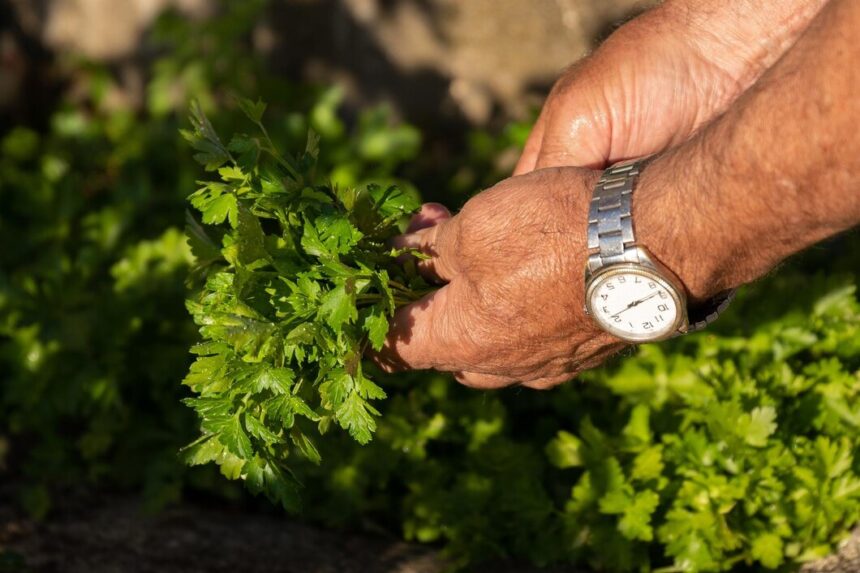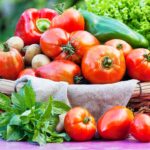Parsley (Petroselinum crispum) is a popular herb known for its culinary uses and nutritional benefits. Growing parsley can be a rewarding endeavor for South African farmers, as it thrives in the country’s diverse climates. This article provides a detailed guide on the process of growing parsley from seed to harvest, including land preparation, growth stages, inputs required, and pest and disease management.
1. Land Preparation
Soil Type:
Parsley prefers well-drained, loamy soil rich in organic matter. Ideally, the soil pH should be between 6.0 and 7.0.
Land Preparation Steps:
- Clearing the Field: Remove weeds, rocks, and debris to create a clean planting area.
- Tilling the Soil: Use a tractor or manual tiller to loosen the soil to a depth of at least 30 cm. This improves aeration and root penetration.
- Amending the Soil: Incorporate well-rotted compost or manure to enrich the soil. A soil test can help determine specific nutrient needs.
2. Seed Selection and Sowing
Seed Selection:
Choose high-quality parsley seeds, such as:
- Italian Flat Leaf: Known for its robust flavor and high yield.
- Curly Leaf: Often used for garnishing and decoration.
Sowing Process:
- Timing: Parsley can be sown in spring or fall, depending on the climate. It prefers cooler weather.
- Seed Depth: Sow seeds about 0.5 cm deep.
- Spacing: Plant seeds 20-30 cm apart in rows that are 30-40 cm apart.
- Watering: Water the area gently after sowing to ensure good seed-to-soil contact.
3. Growth Stages
Germination (2-3 weeks):
- Seeds typically germinate within 14 to 30 days. Keep the soil consistently moist but not waterlogged.
- Temperature: Ideal germination temperature is between 15°C to 20°C.
Seedling Stage (3-6 weeks):
- Once seedlings emerge, thin them to allow adequate spacing. Leave the strongest seedlings, approximately 15-20 cm apart.
- Fertilization: Apply a balanced fertilizer (like 10-10-10 NPK) at this stage to promote healthy growth.
Vegetative Growth (6-12 weeks):
- During this stage, parsley will develop its leaves. Ensure consistent moisture and watch for any weeds.
- Irrigation: Parsley requires about 25-30 mm of water per week. Water regularly to maintain soil moisture.
Maturity and Harvesting (12-16 weeks):
- Parsley is typically ready for harvest 70-90 days after sowing, depending on the variety and growing conditions.
- Harvest by cutting the outer leaves first, allowing the inner leaves to continue growing.
4. Water Requirements and Frequency
Parsley requires consistent moisture, especially during dry spells. Water deeply once a week, ensuring the soil remains moist but not waterlogged. During hotter months, you may need to increase the frequency to twice a week.
5. Fertilization
Fertilizer Types:
- Organic Fertilizers: Well-rotted manure or compost can be applied during land preparation and side-dressed during the vegetative stage.
- Chemical Fertilizers: Use a balanced fertilizer or one with higher nitrogen content to promote leaf growth.
Application Timing:
- Apply the first fertilizer dose at sowing, followed by side-dressing every 4-6 weeks as the plants grow.
6. Pest and Disease Management
Common Pests:
- Aphids: Look for small, green insects on the leaves. Control by using insecticidal soap or neem oil.
- Carrot Flies: These can affect parsley; use floating row covers to deter them.
Diseases to Watch For:
- Leaf Spot: Caused by fungal pathogens, it manifests as dark spots on leaves. Remove affected leaves and apply a fungicide if necessary.
- Damping-Off: This fungal disease affects seedlings. Ensure good air circulation and avoid overwatering.
When to Use Pesticides or Herbicides:
- Use pesticides when pest populations exceed the economic threshold. Always follow label instructions for application rates and safety precautions.
- Herbicides are generally not recommended for use in parsley due to its sensitivity. Hand-weeding is preferred.
7. Harvesting and Storage
Harvesting:
- Harvest parsley in the morning when moisture levels are highest for optimal flavor.
- Use sharp scissors or a knife to cut the stems, leaving some leaves for continued growth.
Storage:
- Fresh parsley can be stored in the refrigerator in a sealed container for up to two weeks.
- For longer storage, consider drying or freezing parsley:
- Drying: Hang parsley bunches upside down in a dark, dry area. Once fully dried, store in airtight containers.
- Freezing: Chop parsley and place it in ice cube trays with a little water, then freeze. Transfer the frozen cubes to a freezer bag for later use.
Growing parsley from seed to harvest can be a fulfilling venture for South African farmers. By carefully preparing the land, understanding each growth stage, providing adequate water and nutrients, and managing pests and diseases effectively, farmers can cultivate healthy and productive parsley. With proper care and management, parsley can thrive in various conditions, providing both culinary delights and potential economic benefits.
Join 'Farmers Mag' WhatsApp Channel
Get the latest Farming news and tips delivered straight to your WhatsApp
CLICK HERE TO JOIN






